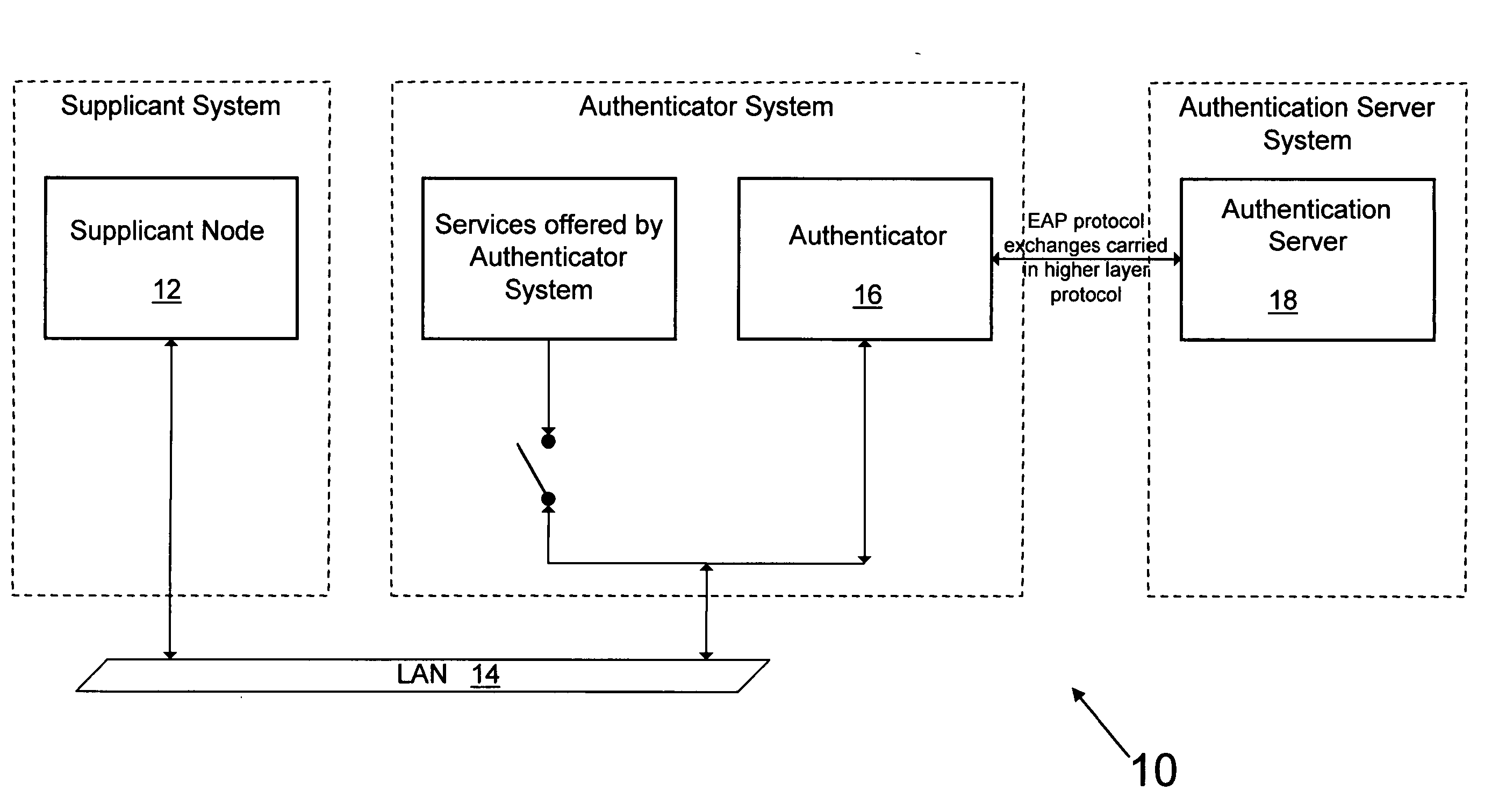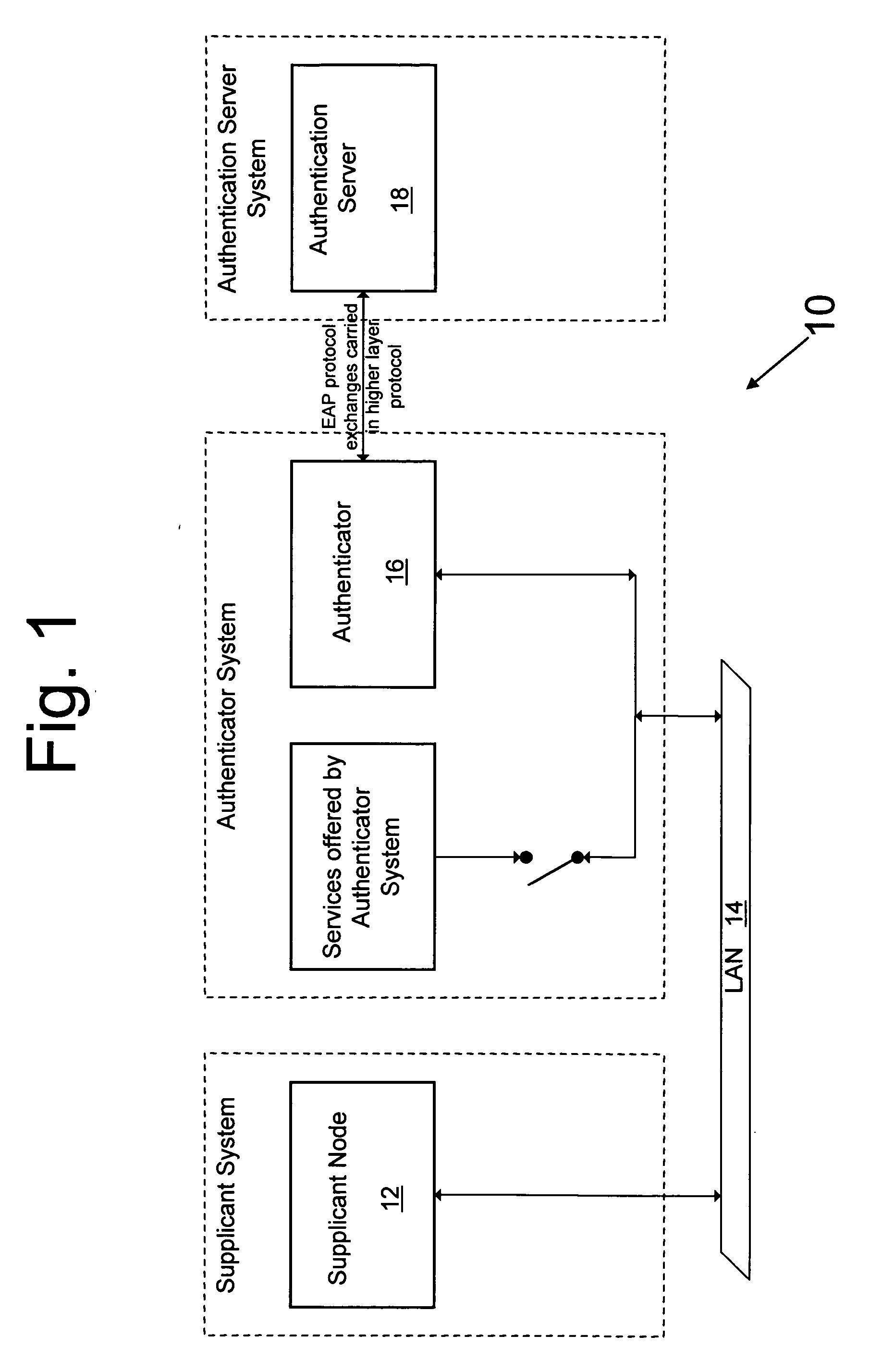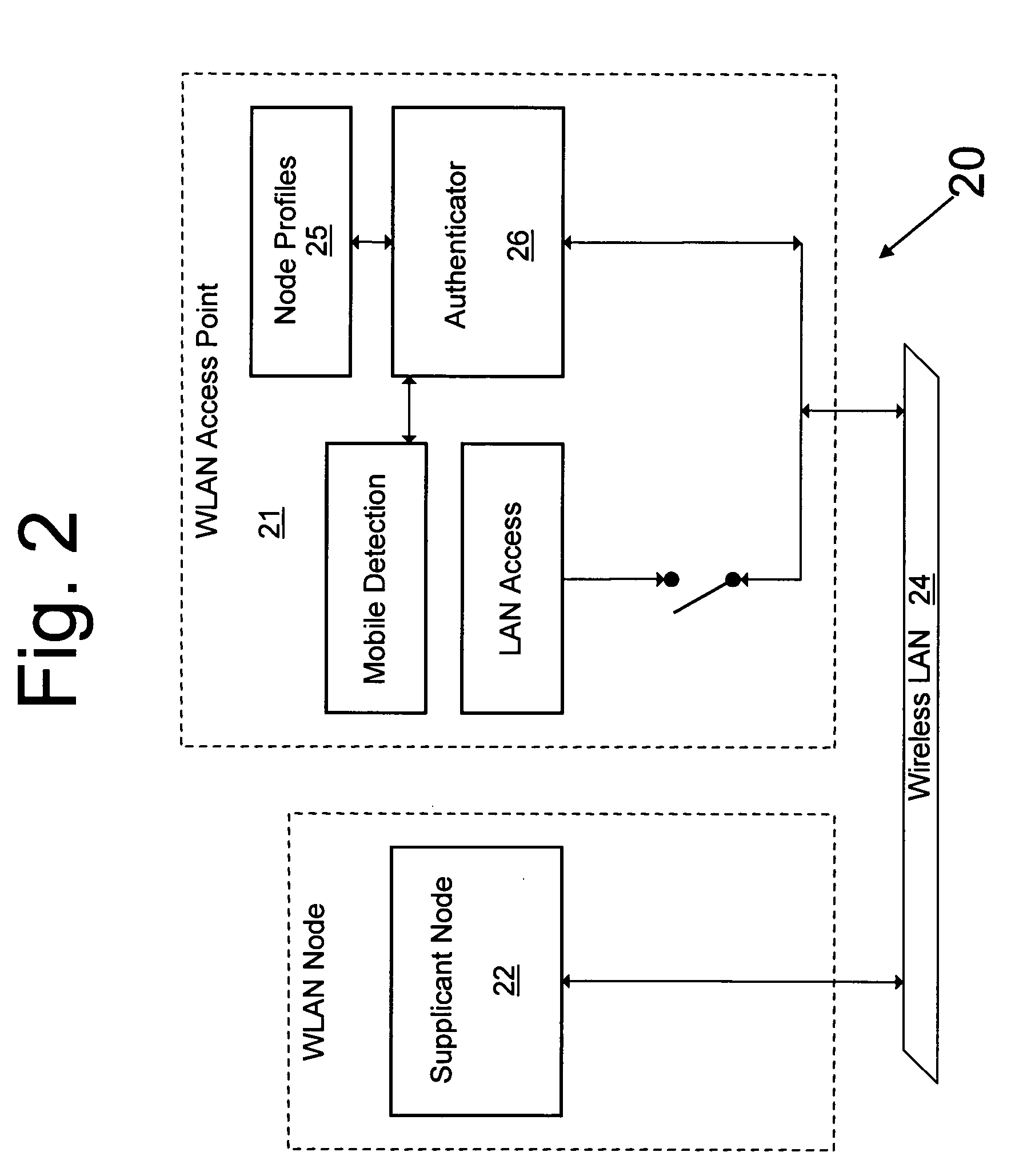Distinguishing between devices of different types in a wireless local area network (WLAN)
a wireless local area network and device technology, applied in the field of wireless network communication systems and methods, can solve the problems of insufficient handling of all devices as portable stations, new problems, and strict energy saving requirements of such devices
- Summary
- Abstract
- Description
- Claims
- Application Information
AI Technical Summary
Problems solved by technology
Method used
Image
Examples
Embodiment Construction
[0025]FIG. 1 illustrates a system 10 including a local area network (LAN) and an IEEE 802.1x framework. A supplicant node 12 requests access to an authenticator or access point 16. The authenticator 16 discovers what nodes are stationary and what nodes are mobile and provides additional services only to the mobile devices. Alternatively or additionally, some additional services may only be for stationary devices. An example additional service for mobile devices is the filtering service for UPnP messages.
[0026] The authenticator 16 can discover whether the attached node is a static or a mobile device. This determination can be made by listening to the signal strength and propagation delays from the device. For example, if the device is moving frequently, it is a mobile device. Alternatively, as described below with reference to FIG. 2, the determination can be made by storing a device type in a profile associated with the authentication data in an 802.1X environment. When the node a...
PUM
 Login to View More
Login to View More Abstract
Description
Claims
Application Information
 Login to View More
Login to View More - Generate Ideas
- Intellectual Property
- Life Sciences
- Materials
- Tech Scout
- Unparalleled Data Quality
- Higher Quality Content
- 60% Fewer Hallucinations
Browse by: Latest US Patents, China's latest patents, Technical Efficacy Thesaurus, Application Domain, Technology Topic, Popular Technical Reports.
© 2025 PatSnap. All rights reserved.Legal|Privacy policy|Modern Slavery Act Transparency Statement|Sitemap|About US| Contact US: help@patsnap.com



